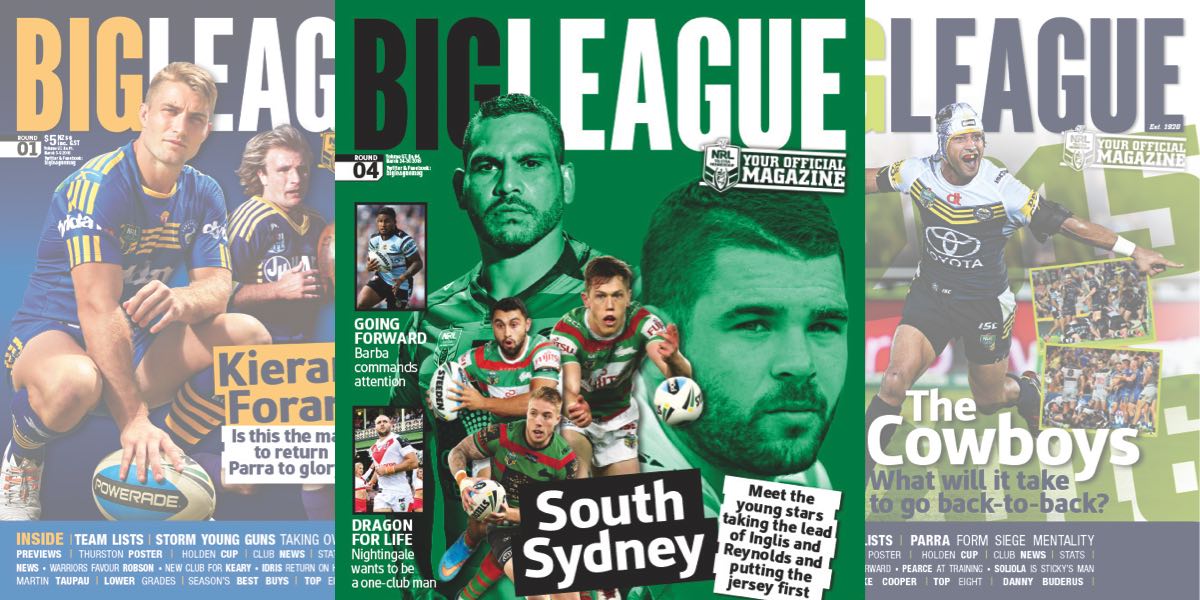• Editor Maria Tsialis discusses the magazine’s success, online limitations, and what the team does during the off-season
With the summer of cricket long gone, it’s time for the footy to take over. The return of the sport means the arrival of Big League on stands.
The magazine is owned by NRL and is published by News Corp Australia. First published in 1920, the title is nearly 100 years old.
“The magazine is a record – people like to keep it,” editor Maria Tsialis told Mediaweek.
Tsialis revealed that fans of the sport and the magazine are so committed that they have collections of the title that date back to the 60s and 70s.
“They go back and look over it, especially if their team has done well in a particular year,” she said.
While the title’s circulation was slightly down in 12 months to December 2015, Big League was one of the few magazines that recorded an increase in its readership. The title had a 7.41% increase in readership compared to December 2014.
Tsialis credited a large part of this to the stories that the magazine carried in that time.
“We are owned by NRL. So we have the licence to focus on all the positive stuff – not that we ignore the negative stuff. We do cover it. But it’s really good to be able to sit down with players and talk to them about their lives outside footy,” Tsialis said.
Telstra currently holds the digital rights for NRL coverage online and on mobile. This means Big League cannot establish a home online with its own branded website. This will be the case for some time.
In a deal worth $1.8 billion late last year, NRL entered an agreement with Nine, News Corp Australia, Fox Sports and Telstra for the game’s coverage on FTA TV, paid TV, and mobile for five years from 2018.
“Contractually we are not allowed to have our own website or app at the moment. We are an NRL brand, and NRL.com and the NRL app are all run by Telstra,” Tsialis explained.
“To be honest, it has been difficult,” Tsialis confessed. “We try not to dwell on it too much, because that is just the way it has always been. So we really, really push our social channels.”
Big League currently has over 102,000 likes on Facebook and over 32,000 followers on Twitter.
“We find that Rugby League fans always have an opinion and they love to talk about it, develop little communities amongst themselves, that comes through on our Twitter and Facebook. That’s what we really try to drive, and what I’ve been trying to drive so far this season,” Tsialis revealed.
Big League will be reinvesting in video this season. The title “dabbled” in podcasting last year, which was very successful, Tsialis explained. So they will also be doing that again this year.
“[Video] is something we haven’t touched on as well as we can yet. We did a video series a couple of years ago, The Untold Stories Behind Origin and The Untold Stories Behind Grand Finals. So we’ve been talking about using a bit of budget to do that again.”
Despite the limitations, Big League content doesn’t die once a particular edition of the magazine is pulled off the shelves. Tsialis pushes big stories out on News Corp websites such as news.com.au or on NRL.com.
The title is also leveraging its affiliation with News Corp by using some of its writers like Phil Rothfield to contribute to the magazine, Tsialis shared.
“He [Rothfield] is mad on social. So we get a really good reaction from that.”
As it’s a seasonal magazine, many assume “that we are sitting around doing nothing,” Tsialis laughed. “But it has become quite busy.”
On top of producing three NRL game specials before the season starts, the team has been charged with laying out, fact checking and subbing historian David Middleton’s 350-page book, which analyses every single NRL season since the 80s.
